#look i made like three back-to-back posts about playing on sawmill
Explore tagged Tumblr posts
Text
Funniest (and worst) kinds of tf2 Shipping Discourse I have encountered just by opening the tag, like two ships passing in the night but one of them is on fire:
It's problematic for Sniper (a thirty-year-old cartoon character) to fuck his fifty-year-old coworkers because "power imbalances"
It's also problematic for Sniper to fuck Scout who is basically his age because Sniper LOOKS old
Sniper x older men is okay but Scout (basically the same age) x older men is "uncomfortable" because he owns funko pops or something
Literally making up ages for characters like Demo or Engie to make something "problematic" instead of just saying you think swordvan is dumb
Every possible pairing is abusive because they're mean to each other in their domination lines
Medic/Pauling (which I hate btw) having a "power imbalance" that comes from Medic being old and not yknow. Pauling literally being everyone's boss (which I still don't think creates a "problematic power imbalance" btw it's just funny that people forget about that)
Adminpauling discourse
Adminsniper discourse which actually isn't from the tag it all comes from my inbox
Acting like Zhanna existing negates your ability to post boots n bombs yaoi in 2023
"Let men be friends"
#the thesis of this post is that sometimes a 30-year-old cartoon character will fuck a 50-year-old cartoon character and that's okay#the ACTUAL thesis of this post is that you guys know you can just dislike something without needing a Reason for it to be bad#tf2#team fortress 2#look i made like three back-to-back posts about playing on sawmill#i need to make a post about shipping so as to not alienate my audience who has never actually played tf2 in their lives#also obviously literally everything abt pyro but this is about funny things not actual ableism that affects people in real life
468 notes
·
View notes
Text
The Weeder in God’s Garden
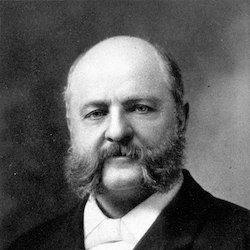
A moral crusader from his early years, Anthony Comstock was born in New Canaan, Connecticut in 1844. His father, Thomas, was a prosperous farmer who also owned two sawmills. While the family had plenty of money, it was through the influence of Comstock’s fervent Congregationalist mother Polly, who like her husband had descended from Puritan stock, that the seven Comstock children led very austere lives marked by hard work, religious instruction, and precious little fun. Among his siblings, Anthony was the only one who clung fiercely to his mother’s fire and brimstone sensibilities. Polly died when Anthony was ten, but by then he knew full well Satan was a very real force in the world, and the only way to stay right with God was to remain pure in thought and deed, resisting the ever-present temptations presented by the Prince of Lies. Alcohol, tobacco, gambling and especially sex were all tickets straight to Hell, a belief he inflicted on everyone around him. This made him, no doubt, a very annoying child.
As a student in the local public school, Comstock never got a firm grasp on reading or spelling, which he considered useless anyway. He also found his growing sense of moral outrage enflamed by his fellow students, those godless little miscreants, who among other things would surreptitiously pass around ads for packs of those French playing cards with the pictures of the girls on them. No, the only education he needed he learned through the Old Testament stories his mother had read him, those tales of a vengeful God and the awful fate awaiting sinful, wicked men who ally themselves with the forces of evil.
When the Civil War broke out, Comstock, then 19, volunteered for the union army and was packed off to Florida. Much to his horror, he quickly discovered that certain Northern businesses, hoping to ease the burden of those proud soldiers willing to sacrifice everything in defense of, well, whatever it was, were in the habit of delivering shipments of not only whiskey and tobacco to the camps, but pornography as well. Although he saw precious little action, he immediately became an enormous pain in the ass to the fellow soldiers in his regiment. Forget about the Confederate army—it was the smoking, drinking, cursing and gambling among those in camp with him that would prove their downfall, and he let them know it on a daily basis. He would claim in his diary to have converted two or three of his fellow soldiers to the ways of righteousness, promising Comstock they would neither drink nor chew tobacco for the duration of the war. But given the evidence of his diary entries, it seems Comstock’s own wartime vice was porn.
In a 1863 diary entry he wrote: “Again tempted and found wanting…Sin, sin. Oh how much peace and happiness is sacrificed on thy altar.” Other entries make it clear the early morning temptations he failed to resist took the form of self abuse.
(In psychological terms, as history has shown time and again, Comstock’s weakness for porn is hardly a shock considering his coming crusade.)
Comstock was not exactly a wholly freelance operator when it came to his wartime proselytizing. He allied himself with The Christian Commission, a project spearheaded by the YMCA which sent missionaries to the front in order to try and save the souls of both Confederate and Union soldiers. His association with the Christian Commission would prove very profitable in the years following the war.
After leaving the army, Comstock moved to New York and took a job at a dry goods store in Manhattan. While most commentators seem baffled by Comstock’s decision to move to the very heart of American vice, a growing dirty metropolis where taverns, gambling join’s, contraceptive devices, prostitutes and erotic literature were all plentiful and accessible, his motivation as a crusader made the move an obvious one. If your self-appointed mission is to stamp out vice, then you go where the vice is.
And sure enough, the bookseller next door to the dry goods store where Comstock worked, a Mr. Conroy, did a brisk business selling pornographic pictures and erotica to those heathens deaf to the word of the Lord. Understandably outraged by this, Comstock entered the store, purchased an obscene book, brought it straight to the police and then led them to the man who sold it to him.
Although the police took Conroy into custody, the bookseller was soon free again and back to his godless business. Every time Comstock demanded the smut merchant be arrested, he was freed again in a matter of hours, convincing Comstock (and correctly) the cops were in cahoots with the city’s purveyors of vice, though this epiphany in no way tempered his holy mission.
Entrapment not being a major legal roadblock in the late 19th century, Comstock would use the same technique—making an illicit purchase, then fingering the seller—to wage his one-man war om smut peddlers throughout the city.
His tireless crusade soon not only earned Comstock coverage in the local papers, in 1872 it also brought him to the attention of the founders of the YMCA. It was the YMCA’s Christian Commission, after all, which had pushed for an amendment to the 1865 postal bill making it a misdemeanor to send obscene material through the mail. Impressed by Comstock’s efforts to eradicate vice, the YMCA’s brass began introducing the young zealot to a number of wealthy and powerful men around the city who who likewise felt something needed to be done about New York’s shocking moral degradation. Comstock seemed to be just the reformist warrior they were looking for. With their financial backing and political connections supporting him, Comstock founded The New York Society for the Suppression of Vice.
Under the guise of the NYSSV, and with the enthusiastic encouragement of local and federal politicians, wealthy conservatives, and evangelicals, Comstock expanded his efforts, demanding the confiscation of not only blatantly pornigraphic materials and the arrest of those who sold them, but the banning of books, artwork and plays he deemed obscene, though his definition of “obscene” was so broad and so vague it essentially boiled down to “anything Comstock didn’t like.” Over the years this would include medical textbooks, classic literature and newspaper editorials condemning his campaign. The efforts to ban works of art and literature willy-nully came to be known, in a term generally if inaccurately attributed to George Bernard Shaw, as “Comstockery.”
Although Comstock did have any number of outspoken enemies around town, especially among early civil libertarians and women’s rights groups, no one seemed capable of stopping, or even curtailing, his efforts. Because of this, his sense of personal invincibility grew, as did his political clout. People were scared to death of him, even if they hated him and everything he stood for. Cross Comstock, and you could find yourself in prison for sending a Mother’s Day card.
It’s been argued that Comstock’s war on obscene material was, at it’s core, really a war against contraception and abortion, given he argued that the reading of obscene materials inevitably led to the sort of behavior that would bring contraception and abortion into play. Inspired by the 1865 postal law, with the help of his political backers, in 1873 what came to be known as The Comstock Act was passed. The law not only forbade sending obscene material through the mail, but any product or information related to contraception or abortion. Three years later, the Comstock Act (aka The Comstock Law) was amended, its powers greatly expanded. The amended version read:
"Every obscene, lewd, or lascivious book, pamphlet, picture, paper, writing, print or other publication of an indecent character, and every article or thing designed or intended for the prevention of conception or procuring of abortion, and every article or thing intended or adapted for any indecent or immoral use, and every written or printed card, circular, book, pamphlet, advertisement, or notice of any kind giving information, directly or indirectly, where, or how, or of whom, or by what means, any of the hereinbefore mentioned matters, articles, or things may be obtained or made, and every letter upon the envelope of which, or postal card upon which, indecent, lewd, obscene, or lascivious delineations, epithets, terms, or language may be written or printed, are hereby declared to be non-mailable matter, and shall not be conveyed in the mails, nor delivered from any post-office, nor by any letter-carrier.”
After the Act was passed, Comstock was made a Special Agent of the US Postal Service, a position that gave him police powers and the right to carry a gun. Although he received no pay as a postal inspector, it was a position he undertook with gusto, as it granted him the power to make his own arrests without bringing those corrupt cops into it. Returning to the same technique he first used to nab that smut peddler Conroy, Comstock, under a false name, would order material through the mail that was covered under his namesake law, and upon receiving it, would order the arrest of the seller, who would then be charged with a federal offense. This included the publisher of anatomy textbooks, two journalists who had written a piece about the sexual improprieties of a well-known religious figure, even one activist who, as a test, had sent some of the Bible’s racier passages through the mail.
In Charles Gallaudet’s 1913 biography, Anthony Comstock, Fighter: Some Impressions of a Lifetime Adventure in Conflict with the Powers of Evil, Comstock would boast he had destroyed 284,000 pounds of printing plates used to create obscene books, 15 tons worth of printed material, nearly 100,000 “articles made of rubber for immoral purposes,” and millions of pornographic images.
It’s also been rumored, and I wouldn’t be in the least surprised if it was true, that in the process of destroying all that material, Comstock quietly squirreled away a massive secret personal library of confiscated books and images, which he would freely share with his wealthy and powerful friends
By his own account, Comstock arrested some four thousand people over the course of his four-decade career as a “weeder in God’s garden,” as he termed himself. Of these, no case received more press than the arrest of D.M. Bennett, a Free Thinker and publisher of The Truth Seeker magazine. As noted in its first issue, the magazine sought to promote "science, morals, free thought, free discussions, liberalism, sexual equality, labor reform progression, free education, and whatever tends to elevate and emancipate the human race." This, needless to say, did not include religious zealots or self-righteous political opportunists, and so found itself in Comstock’s crosshairs.
Comstock had Bennett arrested for both sending a pamphlet advocating Free Love through the mail, and fore writing an editorial for his magazine entitled “An Open Letter to Jesus Christ.” At the close of the highly-publicized trial, Bennett was found guilty and sentenced to thirteen months in prison for violating The Comstock Act.
Comstock was also mighty proud his efforts had driven at least fifteen lost souls (again by his own reckoning) to commit suicide. One was an abortionist who’d been arrested for giving a bottle of pills to Comstock, after he approached her claiming to be the husband of a woman whose current pregnancy was putting her life at risk. Another was Ida Craddock, the author of several explicit marriage manuals, who was arrested after mailing them to her naive and confused customers. Craddock killed herself the day before reporting to federal prison, leaving behind a blistering note condemning Comstock and his supporters.
Comstock’s final arrest and court case came in January of 1915, when he arrested Bill Sanger, husband of pioneering feminist and contraception-rights activist Margaret Sanger, for distributing her pamphlet ���Family Limitation.” Like most of those targeted by Comstock, Sanger was found guilty.
Although Comstock took aim at some worthwhile targets in his war on vice, including medical quackery and economic fraud, he will always be remembered as America’s foremost book-burner, a man whose influence would linger for half a century after his 1915 death. His postmortem influence over what Americans could and could not legally read or see would only be broken in June of 1964, when the Supreme Court ruled Henry Miller’s Tropic of Cancer was not obscene.
Yeah, Anthony Comstock was a real asshole, a man utterly incapable of minding his own goddamn business. But like Joe McCarthy he still has his ardent supporters among the pro-life and evangelical set, pinch-faced types who pine for the days when abortionists were jailed and books they didn’t understand were burned. In fact one of Comstock’s devotees recently published a graphic novel based on the 1913 biography, which itself was turned into a crudely animated film for those True Believers who remain as illiterate as Comstock himself.
by Jim Knipfel
1 note
·
View note
Text
My Top 25 Movies of 2020.
It is indeed time… or at least, as is tradition, it is indeed now overdue for me to dust off the cobwebs from my Tumblr account and post my Top 25 movies of the year. This time for 2020. That funny old year, huh? Where - if some are to be stupidly believed - “no films got released because of the pandemic”.
I thought I was done with this after 12 years and concluding with my Top 25 of the decade effort and yet here I am. Back rather egotistically because 2 people told me how much they look forward to reading this. Go figure! Years 2008 through to present are available in the archive. Frequent visitors know that I’ll throw out a few special mentions to all the films that I wish I could’ve included but couldn’t make them fit yet believe they deserve a shout out regardless and then I get stuck in to what I think are the 25 best films of the year.
As always, films listed are based on their UK release date whether that’s in the cinema or on DVD, VOD etc. Anyway, without further ado, here’s the ‘also-rans’ and ‘near-misses’ separated per genre that very nearly made the final list:
Setting my stall out straight away, Steve McQueen’s Small Axe was very much TV to me and won’t get ranked within my film listing. I loved two of the efforts a great deal (Education and Mangrove), liked two but found them lacking (Red, White & Blue and Alex Wheatle) and did not get what everyone else seems to from the other (Lover’s Rock).
In terms of documentaries this year, I thought Frank Marshall did a fabulous job with The Bee Gees: How Can You Mend A Broken Heart; a comprehensive study of the personal complexities and professional excellence of an incredibly underappreciated band. I found On The Record to be a difficult but inspiring watch and its background ‘politics’ exposed the hypocrisy of Ava DuVernay and Oprah Winfrey in a manner we’re not talking loud enough about. Hitsville: The Making of Motown was an extensive, lovely historical tribute to an era and a style of music, full of great tunes and equally great talking head anecdotes. And finally Belushi managed to find fresh angles and previously untold stories about one of the most mythologised comedy stars of all time, simply by pulling the man to the forefront ahead of his talents.
For dramas, I enjoyed Trial of the Chicago 7 a great deal and am an absolute sucker for the work of Aaron Sorkin but bad casting (Eddie Redmayne) and stunt casting (Sacha Baron Cohen) hurt this film. I’m a sucker for a disaster movie and Pål Øie made an incredibly entertaining one with the Norwegian high-melodrama, The Tunnel. Edward Norton’s long-gestating Motherless Brooklyn was a solid, old-fashioned PI yarn with some great casting to back it up. It’s the most alive Bruce Willis has been in years and it served to remind you that Alec Baldwin can be quite the terrific actor when he’s not being an utter joke of a human. I liked The Vast of Night a great deal when in the throes of watching it but liked it less in the aftermath. Cut Throat City was the underrated dramatic gem of the year in a lot of ways and showed that RZA has a great deal of skill as a legit filmmaker, when not being caught up in the ‘gimmicks’. O.G finally landed here via Sky Atlantic of all places, rather than any sort of VOD release, and it was an enthralling drama that served to remind us all how brilliant Jeffrey Wright can be when not overacting to the point of cringe or being stuck with really terrible writing (hello, TV’s Westworld!).
With the blockbuster season at the cinema all but dead from the outset, the joys of the action genre were to be found in the little b-movies tucked away on streaming platforms and VOD. Quick notable exceptions were The Outpost which was a reminder that Rod Lurie can deliver a hell of an action sequence, blighted by truly awful film-damaging casting and Extraction which was a well-directed derivative piece of hokum. Donnie Yen delivered an earnest, entertaining end to one of the surprise action franchises of the last decade with IP Man 4 that not even Scott Adkins could fuck up. Hack director Deon Taylor accidentally delivered Black and Blue; a pretty good ode to the ‘man on the run’ non-stop action thrillers of the 80s and 90s – with Naomi Harris killing it in the lead role. Netflix tucked away two of the greatest b-movie actioners of 2020 with The Decline (a ‘Doomsday Preppers’ training camp goes horribly wrong) and Earth & Blood (a sawmill owner uses his place of work as a battleground to take on the cartel). And, finally, the Ma Dong-seok (aka Don Lee) Taken rip-off Unstoppable arrived to streaming and turned out to be vastly superior to all of the films it was a knock-off of.
It was a great year for horror, especially if you were open to the sort of scares you were after. Sea Fever didn’t stick the landing but delivered an ace sense of foreboding and tension building for the most part. Harpoon was a sneakily nasty, surprisingly engrossing, violent little film. VFW was a lot of fun but nowhere near as good as its concept and cast suggested it was going to be. It’s also been subsequently marred by the stories coming out of its production and the revelations about Fred Williamson. I thought Come To Daddy was an absolute gift of a horror comedy that kept swerving whenever you thought you had a handle on where it was going. And Elijah Wood continues to show himself to be an American national treasure. After Midnight was an intriguing relationship drama with a horror bent and You Should Have Left, the Stir of Echoes reunion we’ve all long sought, would work as an off-kilter double-bill with it. Kevin Bacon is brilliant in it. Vampires Vs The Bronx is a totally disposable but immensely fun ode to The Lost Boys and The Monster Squad that’ll serve you well on a lazy Saturday night. Black Water: Abyss was a really good little creature feature with a ridiculous ending that infuriates. And Train To Busan: Pennisular was a pretty shit Train to Busan sequel but an immensely entertaining post-apocalyptic zombie action movie.
Onwards is worth mentioning for the fun and moving animated ride it initially presents as but, like too much Pixar nowadays, it does not hold up to repeat viewing.
Comedy-wise, I thoroughly enjoyed Bill & Ted Face The Music but thought its gag-rate was far too hit and miss for it to take a place on the top spot. Buffaloed was a kind of “M’eh” blue-collar Wolf of Wall Street with yet another fantastic ‘How the fuck isn’t she a huge star already’ turn from Zoey Deutch. Timmy Failure: Mistakes Were Made was a quirky out-of-leftfield oddity that me and my eldest son enjoyed a great deal. Eurovision Song Contest: The Story of Fire Saga was not the travesty you would’ve thought it’d be, mainly because of Rachel McAdams, but if Will Ferrell had just leaned a little harder towards his more absurdist style of humour (the killer fairy shit for example?) this could have been so much more. Finally, the second Borat film had some utterly majestic moments of cringe-comedy that make it worthy of a mention but the mechanics of joke-execution and faked set-pieces were far more on show this time around.
And now, if you’re still hanging in there that is, here is my actual Top 25 films of 2020…

25. Skyfire

I don't know whether it's because I’ve been starved of my usual 'Summer Silly Season' this year but I absolutely fucking LOVED this. It's the stupidest, most ridiculous, relentlessly bonkers "Jurassic Park - but with volcanos" fare you could ask for. I have no idea what the fuck Jason Isaac is doing in this but I’m so glad he is because it just adds to the glorious WTF-ery of it all. It's 30 minutes of mechanical lay-up followed by 60 minutes of non-stop, audacious carnage. It's been a long time since me and my wife have had this much fun watching something.
24. Bad Education

Dropped exclusively to Sky Cinema here, this is a great little film that has a shocking true story at its centre. Hugh Jackman and Allison Janney are absolutely terrific. Both of them are the sort of talents who've been in bad movies but never ever given a bad performance regardless.
Here both Jackman and Janney are having a ball with the material and they elevate a very good film into something that demands to be seen.
23. Blood Quantum
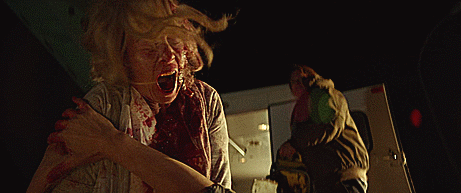
This was definitely one of the first-class b-movie horrors of the year for me. It does wonders on screen with very little AND it gives a shot in the arm to the zombie subgenre. It leads you into thinking you're getting yet another zombie-breakout film before expertly wrongfooting you into growing into something else. It's a Native American NIGHT OF THE LIVING DEAD meets MAD MAX!
22. Bad Boys For Life

This was a first-rate blast, it really was. From the inexplicable reusing of the 'Simpson/Bruckheimer' production card to the reworking of Mark Mancina's original theme, it draws you straight back to that 1990s blockbuster vibe. It's not just very funny and stacked with some pretty decent action sequences but, rather bizarrely, it actually has something interesting to say about ageing and masculinity... because nowadays Joe Carnahan is killing it when it comes to introspective recalibrations on what it means to be a man. If you were to spoil this movie for someone and reveal what the "twist" is it would sound like the stupidest, hokiest shit ever. And yet inexplicably they make it work. And furthermore, Martin Lawrence goes from the tag-along in this franchise to the platinum level MVP here. The entire final third is held up higher by his insanely good line delivery ("Would you fuck a witch without a condom?") and it's most likely how he plays shit as to why that stupid, hokey plot twist works as well as it does.
Over the course of three separate decades each BAD BOYS entry has, in itself, served to be a somewhat accidentally perfect reflection of the very cinematic decade it landed in: The first is possibly one of the last to truly and wholeheartedly successfully land that perfect marriage between the 'MTV era' and the blockbusters; bringing about the boom of the "music video director as filmmaker" that the 1990s became well known for. The second was a pitch perfect reflection of the gratuitous, often empty-headed, completely excessive pop culture period we were birthing in the 2000s. And the third lands now, right in the very time period where masculinity is being put under a spotlight and men are being asked to be more self-reflective about themselves and their conduct.
With that said, the fourth will obviously therefore land sometime in 2029 and deal with Will Smith and Martin Lawrence wandering a pandemic-ravaged Miami wasteland.
21. Wolfwalkers
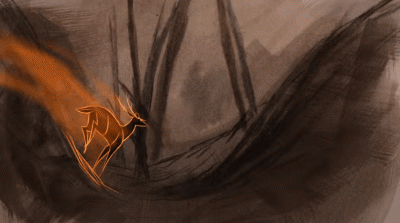
This is one of the most lovely, visually wondrous, sumptuous animated films you'll experience this year. Or in quite some time, actually. It’s not just a great adventure film but it’s also a really effective ‘message’ movie that manages to teach about tolerance and friendship along with the perils of fear-mongering, without ever being overly preachy.
20. An American Pickle
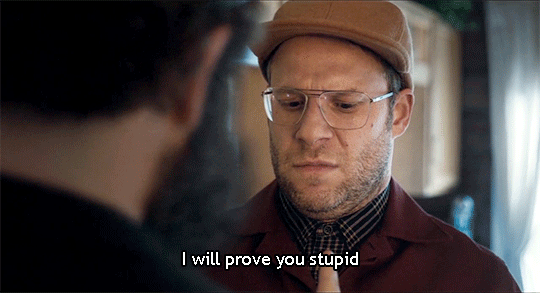
This was one of the surprises of the year for me; I THOUGHT I was getting a quirky Seth Rogen fish-out-of-water comedy and instead I got that... with a massive dollop of heart, humour and interesting things to say about legacy and 'cancel culture'. I liked it a lot. It's also further evidence of how intriguing a talent Seth Rogen is becoming; jumping between broad commercial fare and original off-kilter stuff like this, producing and developing fascinating projects for film and TV and working to pass the ladder back down to others too.
19. Get Duked
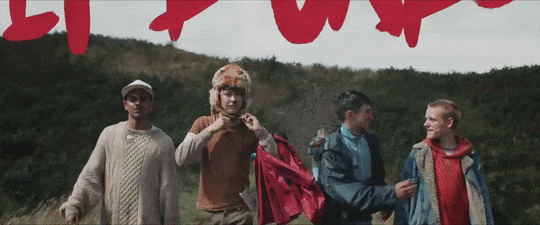
I say this with only a modicum of bias as I know someone who worked a little bit on this film but this was genuinely brilliant - the absolute laugh-out-loud delight we all need right now. At the time I watched this I don’t think I’d smiled in nearly a fortnight but this broke through with me. Its wrap-up is a little too silly for its own good but that aside, this thing is absolutely stuffed with some TRULY great gags! This is one of the best comedies of the year for me.
18. Host

I had been giving this the big ol' swerve because it sounded like unoriginal, overhyped pish frankly and... fuck it, if that hype isn't absolutely deserved: It's a lean, effective, scary incredibly enjoyable ride. Made all the more fascinating by the fact it was made remotely on a shoestring with the director apparently never being in the same room as his cast at any one time due to Covid restrictions.
NB: I could not find a GIF to represent Rob Savage’s Host sufficiently so here’s Jack Black doing a backyard pandemic dance instead...
17. Sweetheart

What a crackin, lean, little horror thriller it is. It gets straight underway from its fade-up and never overcooks itself or leans hard on lazy exposition, silly character actions or bad deus ex machinas. Remember when Jonathan Mostow made BREAKDOWN and it felt like such a shot in the arm for the man-against-the-odds/standard thriller? This is like that - but for survival dramas and creature features! It commits fully to its high concept, helped along by a truly excellent performance by Kiersey Clemons and some really well-delivered set-pieces (that first flare scene is very well done!). If you watched Tom Hanks in CASTAWAY and thought to yourself "This film is great but what it really needs is a monster!" then this is definitely the film for you. And if you believe the rumours, it’s allegedly a sneaky Creature From The Black Lagoon redo for Blumhouse’s expanding ‘Monster Universe’ too.
16. Soul

I really connected with this. I like Inside Out a great deal but I’ve never understood why it's spoken of as a flawless masterpiece when it's overlong, tonally all over the place and has clunky as fuck casting. In the same breath, I don't understand why the reviews for this are so disparate. I thought it was a wonderful way to spend 100+ minutes. It was visually inventive, funny and inspiring. It doesn't quite seed its VERY deep otherworld-building foundations and Graham Norton doesn't really work in his role but overall I thought it was a delight. And, unlike Onwards, it really does lend itself to repeat visits.
15. Tenet

I had real trepidation about seeing this what with the reviews being all over the place but... well... Is it complete, barely comprehensible bunkum of the highest order? Yes. Could the film have benefited from Nolan letting his brother Jonathan have a pass at the script? Hell yes! Is it most definitely not the majestic masterpiece of masterpieces it thinks it is? Yup. Yet in spite of ALL that I had an absolute blast with it, I really did. If you give it a seconds thought it crumbles completely as the utter egotistical piffle it really is. But where it excels is in looking so gorgeous, being so kinetic and massive with its action and casting with actors who sell the shit out of a hokey script that you're so consumed with the spectacle you don't smell the bullshit until its over. Washington Jr has come out of nowhere these last few years to make me a big fan of his work - and Robert Pattinson has went from being an actor I couldn't fucking abide to being someone I now really rate and who I came away from watching this thinking "Yeah, that's your goddamn perfect James Bond right there!"
14. Da 5 Bloods

It works infinitely better as a 'men on a mission' action adventure shot through the off-kilter lens of a Spike Lee "joint" then it does as a searing commentary about race, war, etc. And that's probably why Spike's choice to include real war atrocity photos and documentary footage alongside the narrative doesn't land as successfully as he probably intended it to. But as an overall film, it's a genuinely great watch. Delroy Lindo has always been one of the greatest working actor. Here he perhaps delivers his ultimate masterclass. Regardless of whether awards season moves online or not, you cannot have any SERIOUS dialogue during it that doesn't have his performance heading the conversation. Ignore the dickheads online putting this in the same bubble as TROPIC THUNDER or DIE HARD (??). This is a wink and a nod to TREASURE OF THE SIERRA MADRE and APOCALYPSE NOW, through and through. It's big, bombastic, broad and unafraid to swing out in every direction. It's not flawless but that doesn't mean it's not fuckin ~great~!
13. His House

This very much stands as both one of the most impressive debuts and modern horror movies I’ve seen in quite some time. It's an effective, lean, interesting film that buries under your skin and takes up residency there. Go into it knowing as little as you possibly can and then let it scare the shit out of you and, in its reveals, kick the shit back into you.
12. Tread

I really, REALLY liked this. It's my favourite documentary film of this year - made by that fella who did the bonkers-bad killer dog in the warehouse movie with Adrian Brody, no less! It's an absolutely fascinating true story I knew nothing about, brilliantly intermingling talking heads, archival news footage, dramatic reconstruction and audio recordings. It'll really drop your jaw - it's most definitely one of those 'needs to be seen to be believed' type deals because if you described this to someone as having happened they'd never believe you!
11. Bacarau

No plot description really does this film justice and the less you know going in the better an experience you’ll have. It’s an odd, deeply violent, unsettling, darkly funny, bizarro confection of The Most Dangerous Game meets Assault on Precinct 13 and… well… even that doesn’t really do the film any justice whatsoever. It’s a critique of dire political circumstance mixed with political satire mixed with the tropes of the Western, the siege movie and both horror and comedy. It’s very much its own thing. And that’s what makes it so wonderous.
... and it’s sort of both wondrous AND weird that when searching for Bacarau related GIFs, this was the Brazilian offering I was given! I apologise.
10. Alone

I found this came out of nowhere to be one of my favourite films of the year; a crazily efficient, brutal B-movie without an inch of fat on it that works its propulsive and well-structured screenplay hard to make you feel like you're seeing a new variant on the "stalked woman in peril" film. John Hyams - son of Peter and the man who reconfigured the UNIVERSAL SOLDIER franchise to superb effect - has made one hell of an effective movie that beautifully captures the vastness of the Pacific Northwest: this is one part DUEL, one part FIRST BLOOD, all parts odes to everything from THE GREY, I SPIT ON YOUR GRAVE and the last third of THE SILENCE OF THE LAMBS. It's very easy to make films like this. But it's clearly hard to make them as great as Hyams has done here, otherwise everyone would be doing it. Maybe coz what those films don't have is lead performances as strong and brilliant as Jules Willcox and Marc Menchaca give here.
9. American Murder: The Family Next Door

This is an incredibly powerful true crime documentary on a horrific tragedy, in which Jenny Popplewell tightly and clinically weaves through police interviews, news coverage and Shanann Watts' phone, laptop and social media to weave a moving and ultimately devastating portrait of her and her children's death at the hands of one of the worst forms of evil I’ve ever been exposed to. This still haunts me to this day.
8. Greyhound

I was really impressed with this. A crisp, lean, tension-drenched watch with yet another rock solid Tom Hanks performance centring it. It strips back all the tropes of these war pictures - the character backstories about post-war hopes and dreams, the cutaways to the families back home, the subplots involving the villains - and keeps a propulsive commitment to just this situation, this boat and the people on it; who only talk to one another about the job they're doing. As a result, it's completely involving and committed with action set-pieces that are clean, tense and entertaining as hell. Genuinely had a great time watching this and highly recommend it.
7. #Alive

Whilst the TRAIN TO BUSAN sequel earned rightfully shakey reviews, think of this as an unofficial prequel / 'side-sequel'. It is a tight, disciplined thrill-ride that throws up some interesting spins on old zombie set-pieces (climbing zombie vs. toy drone, for example). It may well deflate as it heads to its denouement but all before it was strong and entertaining enough for it to stand as one of his favourite horrors from this year.
6. The Invisible Man

This started good... then got very good... then got quite frankly flat-out tremendous and then entered a final third flipping anyone the 'bird' who thought that the trailers gave too much away. There is some truly tremendous, inventive and not at all 'cheap' jump scares. In fact, the whole second act is nothing else BUT terrifically effective scare after scare. All bolstered by a REALLY committed lead performance by Elizabeth Moss. Between this and UPGRADE, Leigh Whannell has not only become seriously one to watch but he's possibly just outed himself as John Carpenter's one-true heir.
5. Lynn + Lucy
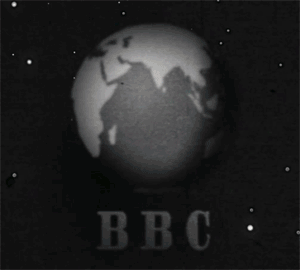
I was left completely broken by this - what a truly fantastic piece of British cinema; a dark, uncompromising morality play for the modern age with a truly jaw-dropping performance by Nicola Burley. And, Jesus Christ, what an unbelievable find Roxanne Scrimshaw is?? THIS is her acting debut? Holy SHITBALLS! It's harrowing stuff that'll really make you think.
4. Parasite

This really is absolutely ~everything~ people are claiming it to be and more too! It's an exquisite piece of work, in love with the art of spinning out a story, narrative layers, sociological parables and effortlessly terrific direction. It builds and builds in an utterly enthralling manner and then... the pressure valve pops, taking you down a whole other audacious avenue that'll have you giggling at the insanity but still completely hooked.
3. Uncut Gems

It’s alright been memed and GIF’d to death but that doesn’t change the fact that it really is an astounding film - it's completely exhausting and quite honestly one of the most anxiety-inducing films I’ve seen in a long, long time. Even on multiple go-arounds, I found myself screaming at the screen, begging Adam Sandler's character to just fucking STOP for five seconds and... and... it's inescapable as to the direction down in which it heads but it goes there at such a propulsive rate, it is actually scary. An absolutely astounding film - it's like a John Cassavetes film shot with the adrenaline drawn from a Michael Bay action movie... and believe every bit of the buzz: Adam Sandler is jaw-droppingly fucking excellent in this!
2. Wolf of Snow Hollow

I thought this was a complete delight. Once again Jim Cummings has taken a film 'type' you THINK you know and infused it with his own very specific sense of humour to give us something that's very much delightfully off-kilter. What's more, as a sophomore directing effort, Cummings deserves all the plaudits for the massive advancement: There's action scenes and scary set-pieces that are really first rate and are way more accomplished than what you'd expect from someone only on their second movie and have never worked in the horror genre before. Cummings is REALLY funny in the lead role too but it's Robert Forster's final performance that'll break your heart. He was a hard miss anyway but this very much drives home what a great guy we've lost.
1. The Way Back

Gavin O'Connor has hit the trifecta with this, Miracle and Warrior on making a masterful sports drama and using it as a platform to 'say something' and draw a career best from a talented but under-appreciated actor (first Kurt Russell, then Nick Nolte and now Ben Affleck).
Affleck is astounding here. Fallible, real and pained. He's truly brilliant. There’s a realism to every movement he makes and every breath he exhales that only someone who has struggled with addiction will recognise. And around him is a deconstruction of the sporting underdog movie as we know it - it's only by the end that we truly realise that this has always been about the connections made through the game rather than the game itself.
Like with Warrior, you can go back and watch this umpteen times and find different strokes in the human and unspoken moments. If ever there was a secretly feel-good film for 2020 it is this – the movie that tells us that it doesn’t matter how hard or how far we fall, we are defined only by the moments in which we rise again.
And that’s that. See you all next year. Maybe ;)

1 note
·
View note
Text
Family tales
My father always loved to tell stories aboutancestors of his grandfather and his father before him. These were mostly humorousstories. I can still remember his laughter when he got to the punchline of a story, or what he thought was the funniest part. Being a child with ADD that went undiagnosed or treated in those days, my attention span to sit down and listen to one of the stories was limited but I picked up bits and pieces. I do remember the last story he told me before he passed away. I was glued to my seat absorbing every word.
At the time, his voice was affected by Parkinson’s disease. His voice was low and barely audible. It was an effort for him to talk and for me to hear what he was saying. There is little doubt in my mind that theevents that occurred in the winter of 1865 are true.
There has been a sawmill in my family for several generations in Guysborough County. The nearest town of Sherbrookewas a bustling place during the gold rush.My quadruple great grandfather was Levi Mason who came from a family of devout Protestants.
It had been a hard winter and supplies were dwindling. His young daughter was sickly and needed some medicine. He needed to go to Sherbrooke for supplies. A journey that could be made in 30 minutes today took between 3 to 4 hours back then using an ox and a cart. He set out early one morning.
After completing his chores, including the purchase of sweets for his children, Levi decided to take a walk around to get the news.
As he was passing by a group of men one of them called out him. “Are you here for the hanging?” He wondered what terrible crime must’ve been committed.
"No,” he said. “This is the first I’m hearing of it. Who is being hanged and why?” They pointed towards the jail and said go see for yourself.
Levi made his way over closer to the jail to have a look at this hardened criminal that they were about to hang. A crowd had assembled.
He heard bits and pieces of the story. The crowd were made up of sympathizers and an equal number who condemned the actions of the accused. He squeezed through the crowd to have a closer look. It was just at lunchtime and the jailer was taking the prisoner his last meal. Whatever it was it smelled gruesome.
Members of the crowd closest to the jail we’re jeering and mocking the prisoner who was just a boy of 16 or 17, not much older than his own son, Joe.
He was dark skinned and blended into the shadows of his cell. The guards decided to put on a show and brought him out into the yard where everyone could see him.
Levi was shocked to see the poor fellows back where it been whipped repeatedly. They dragged him out and strapped him to a post where they proceeded to try to force him to eat the slop they had brought him for a last meal.
The guard announced there was to be a postponement of the execution. That needed to question the young man furtheras they believed the man had accomplices. They wanted to find out where the friends of the accused might be located.
“Damn Yanks,” thought Levi. The crowd started to disperse a little realizing they were not going to see a death today. As they left Levi inched closer to the accused. Compassion filled his heart. He walked over to the young man and he said that he was sorry for him and that he would be back to help him.
He reached into his pocket for some of the sweet treats, including a piece of jerky thathe had purchased for his children. He gave them to the criminal when the guards were not looking.
Levi noticed a glimmer of hope in the young man’s eyes.
The guards noticed Levi and issued him a stern warning. They told him to leave immediately as the prisoner was dangerousor else he might be strapped to the pole next to the accused.
The Mason clan did not respond well to threats. Those were fighting words.
Levi gave the guards the impression he was complying. He went back to his ox and made the trek back home.
He arrived back home around three in the afternoon. The chances of making it back to Sherbrooke before night fall were slim. He gathered up some tools from the mill that he would need to break into the jail as he planned to set the young man free. He asked his wife to gather up some things the young man would need to survive in the wilds of Nova Scotia in the winter. She quickly put together a bag which included fresh bread, a jug of water and a few other odds and ends. And one more thing: a couple of bottles of his brother’s homemade moonshine!
He had a quick bite to eat and headed back to Sherbrooke. His wife was concerned but she knew that Levi always did the right thing. He had kindness enough for his family, friends and complete strangers.
“Why don’t you take your brother John with you” she asked? "No," he said. "It’s one thing for me to put myself at risk but I cannot risk someone else getting caught.”
He arrived in Sherbrooke not getting there till well after dark. He tied his oxen and cart as close to the jail house as he dared.

One of the guards was pacing back and forth in front of the jail. Grabbing a jug of moonshine out of the back of the wagon, he poured some of it over his clothing and proceeded to stagger towards the jail.
“Good evening, gentlemen,” he said, purposely slurring his words.
"What do you have there sir?” With that Levi offered the guard a swig from his jug. “Best moonshine this side of the Atlantic,” Levi boasted.
Soon the guards were fast asleep outside the jail in a drunken stupor. Levi ran back over to wagon and grabbed the peavey, atool used to roll the logs into the sawmill which has a giant hook on one end.
Using the peavey, he pried open the jail cell door. He yelled at the prisoner and told him to get ready to leave. The young man was shackled and chained and shivering from the cold cell. Levi went to work with the peavey and broke the chains.
He wrapped the cold wretch in a bear’s hide and tied some deer hide around his feet which appeared to have incurred a beating.
Levi helped him into the wagon and told him to lie down in the back until they got out of sight.
Once they had travelled outside of the town of Sherbrooke, Levi lit the lantern. It was a stormy night and although it made travel difficult, there was one benefit. The wagon wheel tracks were being filled in quickly with snow making tracking next to impossible. Small blessings.
The young man now had warm clothing and a full belly. They made their way slowly to Levi’s home.
Levi told the youth that he could stay for just a few days as it was likely that his house would be an obvious place to look. This assumed, of course, that the guards could remember who gave them the moonshine, a tribute to the talent of Levi’s brother for making the hooch.
The young man told Levi the story of his incarceration. He had been travelling with his family when they were apprehended by slave hunters. They managed to escape and he thought some of them might be in Halifax in a newly established settlement for the Black community. But he had had the misfortune of being caught and jailed in Sherbrooke by his captors, referred to a “Yanks”.
When they get back to the house, Levi’swife Abigail attended to the young man’s ghastly wound. She made sure that he had a full belly and a warm place to sleep.
It took a week for the news to seep out of Sherbrooke about a daring jail break and the ineptness of the drunken guards.
Levi met with his father and told him the role he had played in the jail escape. His father beamed with pride that his son had come to the rescue of this poor soul. He also had some choice words for the man’s captors. “Damn Catholics,” for allowing such a thing to happen.
Levi’s uncle Grant (his father’s brother) lived a few days away in a place called Garden of Eden. Grant agreed that if they could get the young man to his home, he would assist him in getting to Halifax. They were planning to go there to sell furs.
All young black men at the time were given the name of Tom by their owners. Tom became fast friends with Grant and Abigail’s son, Joseph. He pleaded to make the trip to Halifax with his uncle, Grant. His mother was appalled at the idea but his father was more understanding figuring that no one would care about the matter in a few years’ time. He permeated Joe to go, after convincing Abigail, of course.
Tom’s journey to reconnect with his family commenced in the spring with the aid of the Mason clan.
Before delivering Tom to Grant, the Masons did their best to prepare Tom for survival in the wilds of Nova Scotia.
Tom thanked the Mason family profusely for their kindness and pledged this
More a half a century later Levi’s great grandson Abe and his brother Joe went to Truro to bid on some livestock.
Now, Joe was a young man of twenty and somewhat naïve in the ways of the world. While in Truro, Joe rescued a boy from drowning by diving into a river in the dark and almost drowning. The boy he rescued was black.
When they were safely back on shore, a group of local men asked him what was wrong with him for risking his life to save a man of color. Joe was hot tempered and before you know it, fists were flying. Joe and Abe found themselves in the middle of a brawl where they were outnumbered 10 to 2.
From out of nowhere came 4 young black men came to their aid. Thanking them for their rescue they got to talking. Before too long, they all realized that their families were connected with a tale from long ago.
Abe asked the young man why he had helped him and risked himself in this way.
The young man proceeded to tell him the story of how his great grandfather had been rescued from execution by a stranger.
He said that they were raised to never turn your back on someone in need. The story was all too familiar to them. Joe and Abe listened with rapt interest and realized that the story that had been passed down over the generations was not a tall tale after all.
The boys compared stories and there was little doubt that it was their great grandfather who orchestrated the break out from the jail of the young black man whose relatives just rescued them from a beating.
Kindness pass it on


0 notes
Note
Hello! I'm not sure how much you know about the 1848-50 California gold rush, but as a native Californian, I've always been fascinated by the topic. My question is multifaceted. For one: how big would miners plots of land along the various rivers be, and would people actually live on the same plots that they mined for gold? Also, what would it be like for a young woman and/or young men and children in an area like this?
Hello there! Well, aren’t you in luck because we have the Archivist from @scriptlibrarian answering this one! The Archivist has also studied history and has got your back so just read on!
There is gold in them darn hills!
Quick history of the California Gold Rush. In 1848, John Marshal found flecks of gold in the American River, just below the Sierra Nevadas, in Coloma California, while building a water powered sawmill for John Sutter.
Just days after he discovered the gold, the Treaty of Guadalupe Hidalgo was signed, ending the Mexican-American War, giving California to the United States and essentially the gold.
The discovery of Gold shaped California into the state is today. California saw the largest migration influx in the history of the United States. In 1848 there was roughly 157,000 people in California (150,000 Natives, 6,500 Spanish/Mexican, 700 American/Non-Native). Within 20 months the Non-Native Population soared to 100,000 and by the mid 1850’s was past 300,000. This massive population influx put California on fast track to Statehood, and with the Compromise of 1850 California was allowed into the Union, just two years after the land was acquired, as a Free State - leading a imbalance in Free vs Slave States.
So now that we got background history established let’s look at your questions.
How big would miner’s plots of land along the various rivers be…
I admit, I dug around for this information and beyond going into deep dark storage and digging out (pun intended) my books from school … the best answer I could find is - depends.
Yeah I hate that also.
A miner would first have to Staking a Claim, which involves first the discovery of a valuable mineral in quantities that a “prudent man” would invest time and expenses to recover them. Then mark the claim boundaries, with wooden posts, capped steel posts, both of which must be four feet tall, or stone cairns, which must be three feet tall. Then filing a claim with the land management agency (USFS or BLM), and the local county registrar.
There are four types of Land Claims, a miner could make:
Placer (minerals free of the local bedrock, and deposited in benches or streams) - This would be your typical visual of Gold Miners. Bent over a stream with a pan, looking for flexs or small nuggets of gold.
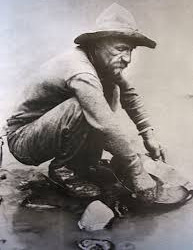
Lode (minerals in place in the mother rock) - next stage up. The Miner has a section off shoot of the river, and is breaking up the rocks looking for veins of gold.
Tunnel (a location for a proposed tunnel which claims all veins discovered during the driving of it) - This would be someone with enough capital to start mining operation looking for gold, and could hire workers.
Millsite (a maximum five acre site for processing ore) - This is a full on organization, that is mining not just gold, but other minerals as well. Has a team of miners, and likely a full town surrounding it to supplement the miners.
So if your character would need to find the gold, stake out his claim, then register it. Depending on how much gold found, expense to work the land, and fees for the register - would determine the size of his land claim.
Would your character live in the same spot as they mine?
Yes, they would have a camp with a tent and supplies near by, so they could work their claim dawn to dusk. They did this for a variety of reasons:
Ease of access to the claim. The last thing anyone wanted to do was hike in and out of the area, wasting precious time traveling when they could be mining.
Protecting their assets. If they are away from their claim, someone could sneak in and mine the area, or re stake the claim stating it was abandoned.
Also, what would it be like for a young woman and/or young men and children in an area like this?
The Gold Rush was not really a place for children. It was a brutal work, and a very lonely existence. Many men left their families behind in hopes of making it rich to bring back the gold to them.
That doesn’t mean that there wasn’t women in the camps.
At one point there was a call out to women to go to California, because there was a fear men would do ‘untold’ things without the calm and stable influence of a woman (not many headed the call).
There were wives that worked the claims with their husbands, and likely even a few who took over the claim after he died. Though this was dangerous as she would be on her own, and had very little rights to the land.
Most of the women seen in or around the camps were washers, cooks, those seeking out a living for their family. These women came with their husbands, fathers, brothers and ended up making the money for the family to survive, while the men panned for gold.
By the 1850’s there were roughly 1000 women working in and around the mines, but they were still a small part of the population, and by the 1860’s they were less than 19% of the population of California.
A good resource to look into the role women played in the Gold Rush would be They Saw the Elephant: Woman in the Gold Rush by JoAnn Levy.
Now as for young men, it would depend on what you mean by young men?
There were many teenage boys out in the fields, either they came with their father or ran away from home. The Gold Rush was an opportunity to make it rich fast, and men from all walks of life, old and young found their way to California.
Children were less likely in the mines or panning for gold. If the whole family was in the gold fields, the younger kids would be with mom, helping with cooking, washing, etc. Older boys maybe 12ish would be with dad. There are not many accounts, but it didn’t mean they weren’t there.
William Tecumseh Sherman - the future Civil War General, worked in San Francisco during the Gold Rush as a banker, and had his two young sons with him during the time, while his wife and daughter stayed back East. Now this was in the city and not the gold fields. Women, kids and families were very common in San Francisco.
In contrast Ulysses S. Grant was in the Army at the time, stationed in the gold fields and had left his family behind. This also led to him being discharged from the Army, because of his drinking problem, as he had never done well being away from his wife, Julia.
Irony both men would come together a decade later, a friendship that some say changed the world. But that is another essay.
Some interesting facts about the Gold Rush that could be helpful.
The Gold Rush attracted immigrants from around the world, by 1850 more than 25 percent of California’s population had been born outside the United States. As the amount of available gold began to dwindle, miners increasingly fought one another for profits and anti-immigrant tensions soared. In 1850 California’s legislature passed a Foreign Miner’s tax, which levied a monthly fee of $20 on non-citizens, the equivalent of more than $500 in today’s money. That bill was eventually repealed, but was replaced with another in 1852 that expressly singled out Chinese miners, charging them $2 ($80 today) a month. Violence against foreign miners increased as well, and beatings, rapes and even murders became commonplace. However no ethnic group suffered more than California’s Native Americans. Before the Gold Rush, its native population numbered roughly 300,000. Within 20 years, more than 100,000 would be dead. Most died from disease or mining-related accidents, but more than 4,000 were murdered by enraged miners.
Early sections of San Francisco were built out of ships abandoned by prospectors. The Gold Rush conjures up images of thousands of “’49ers” heading west in wagons to strike it rich in California, but many of the first prospectors actually arrived by ship. Within months, San Francisco’s port was teeming with boats that had been abandoned after their passengers, and crew headed inland to hunt for gold. As the formerly tiny town began to boom, demand for lumber increased dramatically, and the ships were dismantled and sold as construction material. Hundreds of houses, banks, saloons, hotels, jails and other structures were built out of the abandoned ships, while others were used as landfill. Today, more than 150 years after the Gold Rush began, archeologists and preservations continue to find relics, sometimes even entire ships, beneath the streets of the City by the Bay. Map of where ships can be found in San Francisco
Mining wasn’t cheap! Most of the men who flocked to northern California arrived with little more than the clothes on their backs. Once there, they needed to buy food and supplies, which San Francisco’s merchants were all too willing to provide for a cost. Stuck in a remote region, far from home, many prospectors coughed up most of their hard-earned money for the most basic supplies. At the height of the boom in 1849, prospectors could expect prices sure to cause sticker shock: A single egg could cost the equivalent of $25 in today’s money, coffee went for more than $100 per pound and replacing a pair of worn out boots could set you back more than $2,500.
The merchant’s made the money not the miners. As the boom continued, more and more men got out of the gold-hunting business and began to open businesses catering to newly arrived prospectors. In fact, some of America’s greatest industrialists got their start in the Gold Rush. Philip Armour, who would later found a meatpacking empire in Chicago, made a fortune operating the sluices that controlled the flow of water into the rivers being mined. Before John Studebaker built one of America’s great automobile fortunes, he manufactured wheelbarrows for Gold Rush miners. And two entrepreneurial bankers named Henry Wells and William Fargo moved west to open an office in San Francisco, an enterprise that soon grew to become one of America’s premier banking institutions. One of the biggest mercantile success stories was that of Levi Strauss. A German-born tailor, Strauss arrived in San Francisco in 1850 with plans to open a store selling canvas tarps and wagon coverings to the miners. After hearing that sturdy work pants, ones that could withstand the punishing 16-hour days regularly put in by miners, were more in demand, he shifted gears, opening a store in downtown San Francisco that would eventually become a manufacturing empire, producing Levi’s denim jeans.
And to prove how fate is fickle - the man who’s name will always be associated with the California Gold Rush - John Sutter - died in poverty. As news had spread about the discovery of gold on his property, within months, most of his workers had abandoned him to search for gold themselves, while thousands of other prospectors overran and destroyed much of his land and equipment. Faced with mounting debts, Sutter was forced to deed his land to one of his sons, who used it to create a new settlement called Sacramento. Sutter Sr. was furious—he had hoped the town would be named after him—but he had more pressing concerns. Nearly bankrupt, he began a decades-long campaign to have the U.S. government reimburse him for his financial losses, to no avail. While thousands became rich off his former land, a bitter Sutter retired to Pennsylvania and died.
I hope this information is helpful, and will give you some insight of the world during the California Gold Rush.
Some great sources to check out:
Women in the Gold Rush
Summary of Gold Mining Techniques
Articles on the Gold Rush
History Channel’s Gold Rush
194 notes
·
View notes